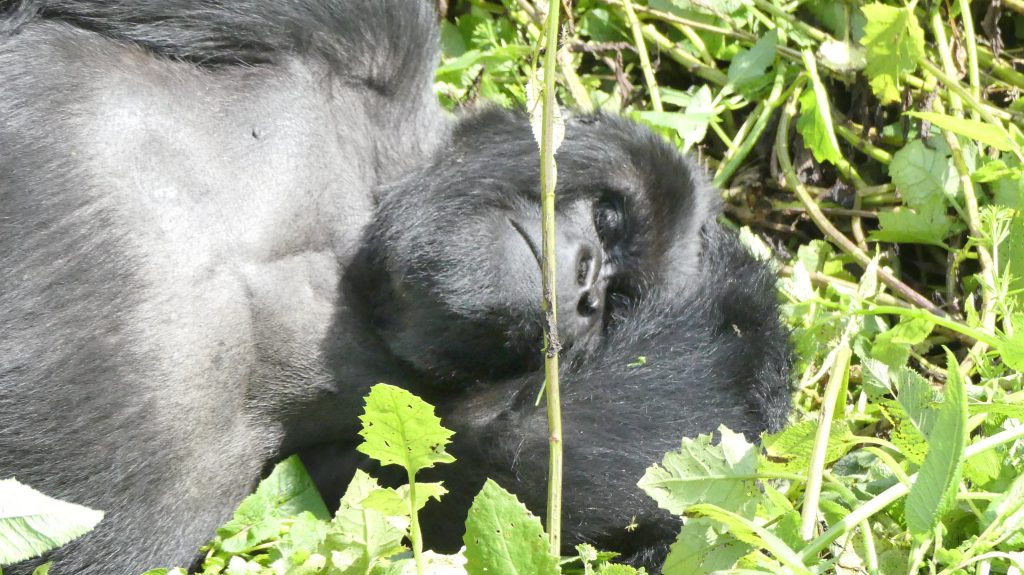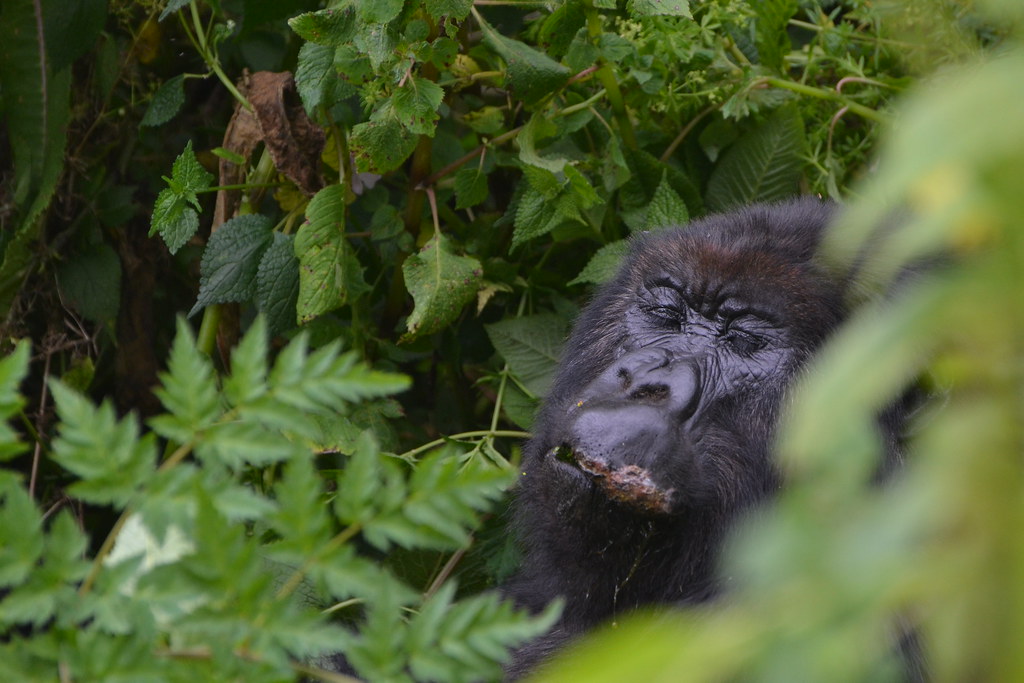Most Popular Gorilla Family Group In Rwanda
Most Popular Gorilla Family Group in Rwanda: With about ten habituated mountain gorilla families—Sabyinyo, Susa, Karisimbi, Umubano, Amahoro, Kwitonda, Hirwa, Bwenge, Agashya, and Ugyenda—Rwanda now has the largest number of mountain gorillas. Every one of these groups has become accustomed to the Volcanoes National Park.

All 380 mountain gorillas are found in Volcanoes National Park. Part of the larger Virunga Mountain range that stretches all the way to the Democratic Republic of the Congo is the volcanoes national park. The Virunga Mountain range is home to about 500 mountain gorillas. The remaining half reside in the gorilla parks of Mgahinga and the Bwindi Impenetrable National Park in Uganda.
As its name implies, mountain gorillas inhabit forests high in the alpine, at elevations between 8,000 and 13,000 feet. Its fur is thicker and more plentiful than that of other amazing gorillas. Their fur helps them survive in a place where the temperature regularly drops below freezing. They also have large hands and feet, strong arms, and a huge chest. As the gorilla ages, the hair on its back saddle turns white and resembles the silver hair of the elderly. This is the origin of the term “silverback” for the elder males. Men are significantly bigger than females. A fully developed male mountain gorilla can weigh between 140 and 206 kilograms and stand 1.7 meters tall.
Susa A Family Group
The Susa One of the most well-known, yet most difficult to follow, gorilla families can be found at Volcanoes National Park. The Susa River, which flows through their home region, is the source of the name Susa. Dian Fossey was a gorilla protectionist who spent many years studying mountain gorillas and popularized the Susa Gorilla family. She conducted study on one particular family more frequently than others, and it was possibly her favorite group. Tracking the Susa A group is difficult because this family group tends to travel far and occasionally, but game officials move ahead of you and locate it early, saving you from having to spend a lot of time hiking Volcanoes National Park’s wilderness.
The twins, Byishimo and Impano, are another distinctive feature of this family. Byishimo and Impano, the well-known animated young couple, add a lot of energy and vitality to this group of gorillas, making them fascinating to watch. Additionally, Poppy, the family’s gorilla, may be among the oldest habituated gorillas. Susa A is the largest and most fascinating group to track in Rwanda‘s Volcanoes National Park, with approximately 24 members, including 3 male gorillas and 3 silverbacks. Kurira is the name of this group’s head silverback.
Fit travelers who are prepared to travel long distances to witness this remarkable family are best suited for this gorilla group journey. It really is a once-in-a-lifetime experience to watch with this family! Recall that you have been granted an hour to spend with the Susa gorilla group, which is a perfect opportunity for you to observe its two twins as they play and eat. There were 42 members of this group at one point in 2009, however later on, the group broke apart, leaving 24 members
Family Susa Group B (Karisimbi group)
From Susa Following a split in 2009, a family group known as the Karisimbi group—so named because it usually resides in the slants of the Karisimbi Spring, which gushes lava at an elevation of almost 4507 meters above sea level and is Rwanda‘s most notable mountain pinnacle—became Susa B. It can take tourists up to a whole day to track this gorilla family because they occasionally relocate to the top of the forest, making the walk quite challenging. One of the Virunga Volcanoes, Mount Karisimbi, has 13 peaks that Nyagakangaga, the Silverback who currently leads the Karisimbi family, climbed with his family.

Regretfully, on April 10th, 2012, a smaller section broke away from Karisimbi to form Isimbi, another family group. Since the Karisimbi group hasn’t been observed since October 2016, their current membership is unknown. However, on October 17, 2016, before it crossed the border into the Democratic Republic of the Congo, there were ten people in total—five Silverbacks, two Blackbacks, one sub-grown-up female, one adult female, and one adolescent—members of the most well-known gorilla family group in Rwanda.
You may find the Susa family group’s trip to be extremely strenuous as you make your way through the dense vegetation. Spending time with mountain gorillas in their natural habitat is undoubtedly worth the trek, despite the high altitude and the treacherous, mountainous routes that may make the journey exhausting.
Did you know?
Here are some fascinating gorilla facts that may help you better understand these animals as you get ready for your journey to the Volcanoes National Park.
Gorillas in the mountains can eat all day!
Approximately 25% of the day is spent by mountain gorillas consuming food, primarily plants. Leaves, shoots, and stems make up around 85% of a gorilla’s diet, although they can also eat hatchlings, snails, underground invertebrates, roots, bark, and rotting wood.
In the wild, they have a lifespan of over forty years!
Gorillas are classified as newborns up to the age of three and a half, and as adults starting at roughly the age of eight. In Rwanda, males aged 8 to 12 are referred to as “blackbacks,” and they are the most popular gorilla family group. After turning twelve, they develop a silvery patch of hair over their hips and back, earning them the moniker “silverback.”
They belong to an endangered species.
The primary threat to mountain gorillas is the deterioration of their habitat. The land is gradually converted to horticulture as the population grows, and competition for scarce natural resources leads to deforestation. Additionally, people may set traps for bush meat, which may unintentionally injure the remarkable primates. Gorillas don’t just stay in their forest habitats. In order to consume crops like maize and bananas, these monkeys wander into farms, which can lead to conflict with nearby villagers who depend on these primates for their subsistence.



